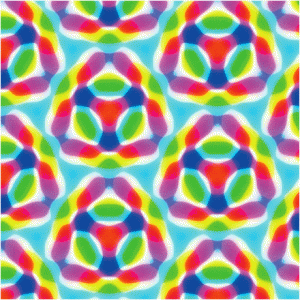Of Waves and Wallpaper
 To most people, wallpaper is little more than a decorative background on a flat surface: Pleasing designs, pasted in vertical strips from wall to wall. But in the minds of mathematicians, the repetition of figures—coupled with the idea of covering 2D space—suggests a way to study the fundamental nature of symmetry.
To most people, wallpaper is little more than a decorative background on a flat surface: Pleasing designs, pasted in vertical strips from wall to wall. But in the minds of mathematicians, the repetition of figures—coupled with the idea of covering 2D space—suggests a way to study the fundamental nature of symmetry.
Applied mathematician Frank Farris, at Santa Clara University in California, began thinking about symmetry and wallpaper in the mid-1990s when he found his undergraduate geometry teaching materials wanting. “I didn’t like what I was seeing,” he says. The textbook used simple drawings to illustrate exquisite and powerful mathematical statements about symmetry. “I didn’t like the images being held up to illustrate these beautiful math theories about patterns, and I didn’t like the vocabulary people were using. They were describing patterns as being broken into blocks, as if that were the only way to make a pattern.”
I wrote about Farris and his marvelous wallpaper for PNAS in November 2015.